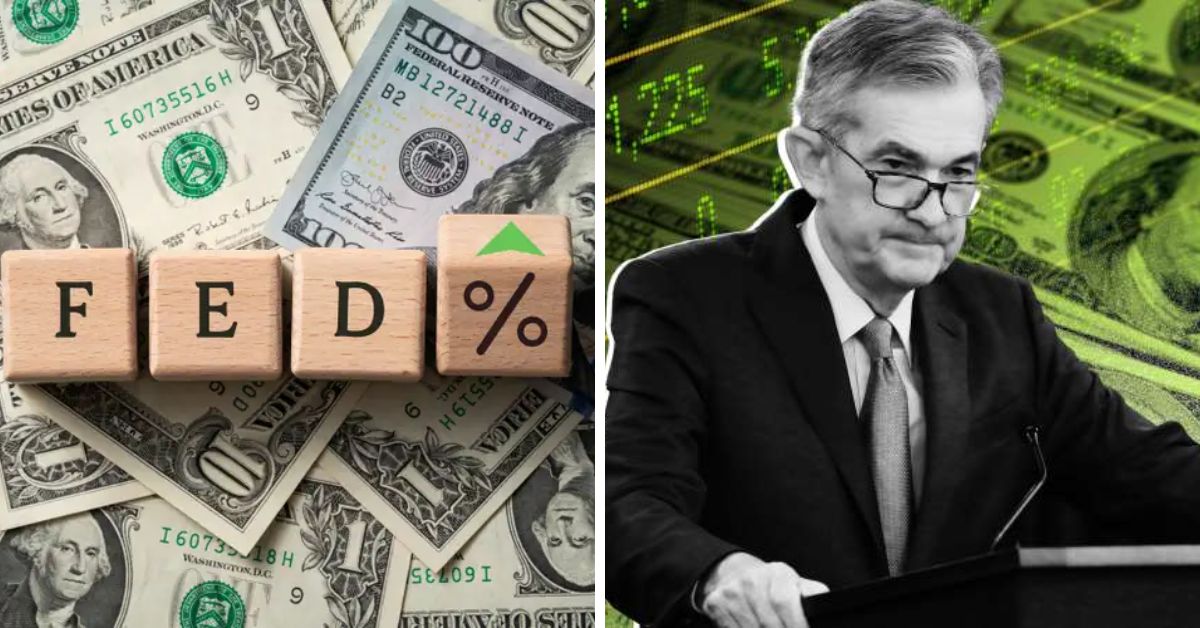On Wednesday, the Federal Reserve increased interest rates by a quarter of a percentage point. Fed Chair Jerome Powell stated that for inflation to “credibly” return to the U.S. central bank’s 2% target, the economy must still slow down and the labor market must deteriorate.
This is The 11th Fed Rate Hike in The Last 12 Fed Meetings
The increase, the Fed’s 11th in the past 12 sessions, raised the benchmark overnight interest rate to a range of 5.25%-5.50%, which had not been continuously exceeded for about 22 years and had last been seen immediately before the 2007 housing market meltdown.
The tweet below is related to the hike of Fed rate:
⚠️BREAKING:
*FEDERAL RESERVE RAISES FED FUNDS RATE BY 25BPS TO 5.50%
🇺🇸 🇺🇸 pic.twitter.com/GjycesjONh
— Investing.com (@Investingcom) July 26, 2023
Little changed from its June 14 statement, the Fed’s language left the central bank’s policy options open as it looks for a stopping point to the current tightening cycle. “The (Federal Open Market) Committee will continue to assess additional information and its implications for monetary policy,” the Fed said.

The September meeting, which is eight weeks away, is currently thought to be “live” for another rate increase, though a continued slowdown in inflation and poor economic data may possibly cause officials to take a break. Powell offered no commitments in either direction.
You can also read about other similar articles by visiting the links below:
- What anxiety of a 50-basis point Fed rate hike tells regarding forthcoming stock market volatility
- Greatest winners and losers from the Fed’s interest rate conclusion
Following the Fed’s most recent policy decision, Jerome Powell said in a press conference that the central bank was closely examining “the totality” of incoming data and specifically looking for indications that the economy was headed for a period of “below-trend” growth, which Powell believes is necessary for inflation to decline.
Important price indicators are still rising at a rate that is higher than double the Fed’s goal. The job market, where the unemployment rate is still at a low 3.6%, hasn’t seen much of a hit since inflation has been slowing down. The second quarter’s gross domestic product is expected to have increased at just that percent, according to experts surveyed by Reuters. Economic growth has continued to exceed the Fed’s estimated trend rate of 1.8%.
Powell cited the fact that inflation has decreased from its peak without significantly harming the economy as a positive development.
But he added that the Fed is entering a challenging phase in its battle against inflation, balancing the necessity for additional rate hikes against the risks of going too far. He added that it will probably take some economic losses to complete the work on inflation.
“My base case is that we will be able to achieve inflation moving back down to our target without a really significant downturn that results in high levels of job losses,” said Powell. However, there is still much to do, and it is a long way to go. A period of below-trend growth and some easing of labor market conditions are likely necessary to reduce inflation.
The Federal Reserve said following its meeting last month that it would monitor incoming data and analyze the effects of rate hikes on the economy “in determining the extent of additional policy firming that may be appropriate” to accomplish its inflation target.
Although inflation indicators have been worse than anticipated since the Fed’s meeting on June 13–14, policymakers have been hesitant to abandon their hawkish stance until there has been more success in reducing price pressures.
12 out of 18 policymakers predicted that at least one more rate hike would be required by the end of this year for financial conditions to remain restrictive enough to ensure that inflation continued to drop in their most recent predictions, which were released at the conclusion of the June meeting.
If You Liked Our Content, Please Follow us on Twitter (@CaliforniaExam1) to stay updated about celebrities and their lifestyles.




